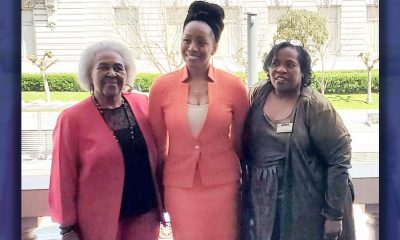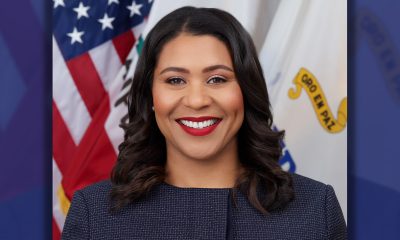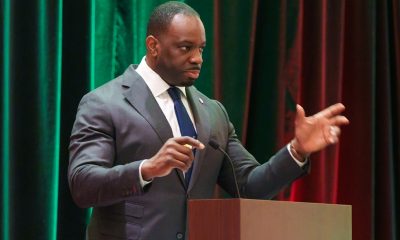#NNPA BlackPress
Doulas: A Formal Part of CA Health Care System – Birthing While Black Part 2
BLACK VOICE NEWS — While California boasts one of the lowest pregnancy-related mortalities in the nation, the latest available data from the California Department of Public Health (CDPH) that covers the period of 2017-2019 shows that the pregnancy-related mortality rate is 47.3 per 100,000 births for Black people compared to 11.1 for White people, 12.6 for Hispanic people and 14.0 for Asian people.
The post Doulas: A Formal Part of CA Health Care System – Birthing While Black Part 2 first appeared on BlackPressUSA.
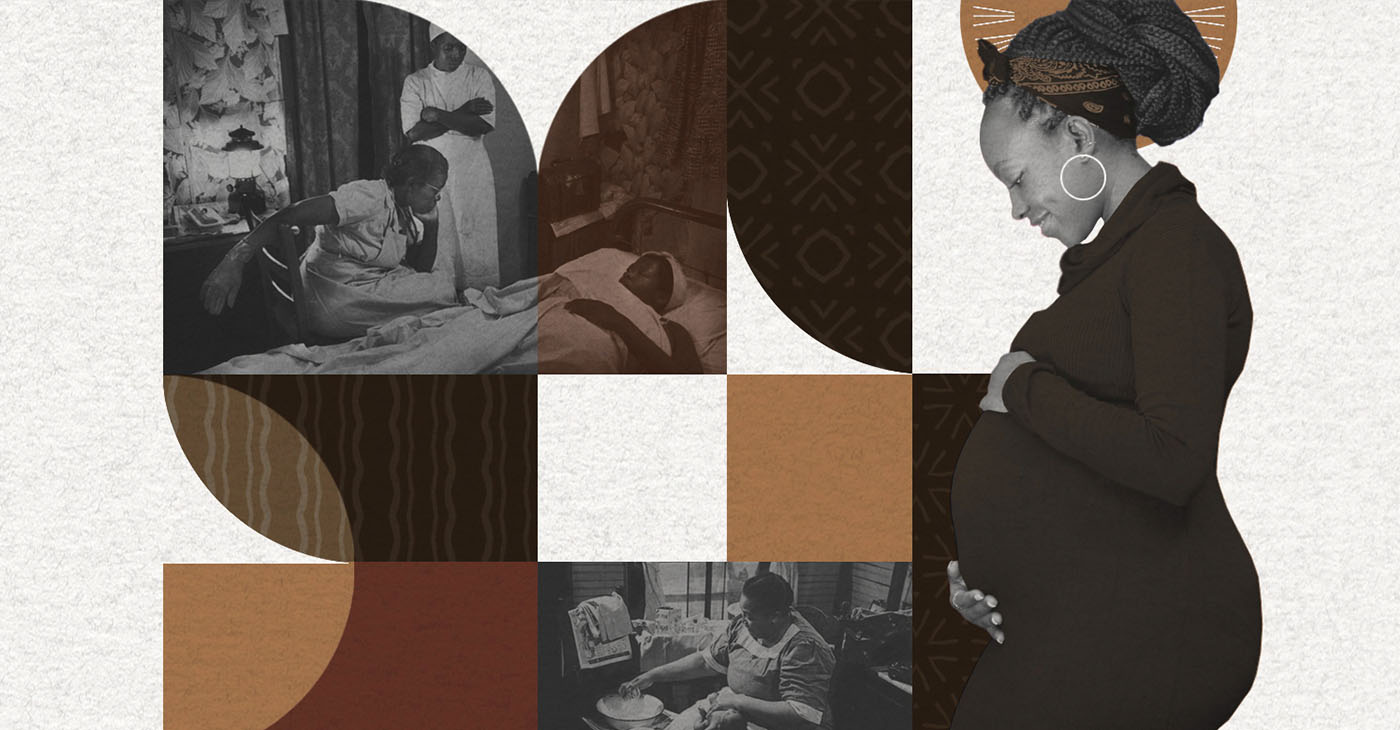
CA acknowledges doula services as part of the solution to reduce maternal mortality
By Breanna Reeves | Black Voice News
The topics of Black maternal mortality and pregnancy-related death have become more prevalent over the last decade as the U.S. has been identified as having one of the worst maternal mortality rates among high-income countries.
A report published by the Commonwealth Fund found that the U.S. had the highest maternal mortality rate among wealthy nations: 23.8 deaths per 100,000 live births in 2020. That rate is double for Black maternal mortality: 55.3 deaths per 100,000 live births.
While California boasts one of the lowest pregnancy-related mortalities in the nation, the latest available data from the California Department of Public Health (CDPH) that covers the period of 2017-2019 shows that the pregnancy-related mortality rate is 47.3 per 100,000 births for Black people compared to 11.1 for White people, 12.6 for Hispanic people and 14.0 for Asian people.
Available data for maternal mortality rates across race/ethnicity for Riverside and San Bernardino Counties are not available for public access. According to a representative from the California Department of Public Health, the agency “does not publish pregnancy-related death counts or pregnancy-related mortality ratios (PRMR) by race/ethnicity at the county or regional level to maintain data confidentiality and ensure statistical stability,” but noted that across the state, Black birthing people “continue to have the highest PRMR.”
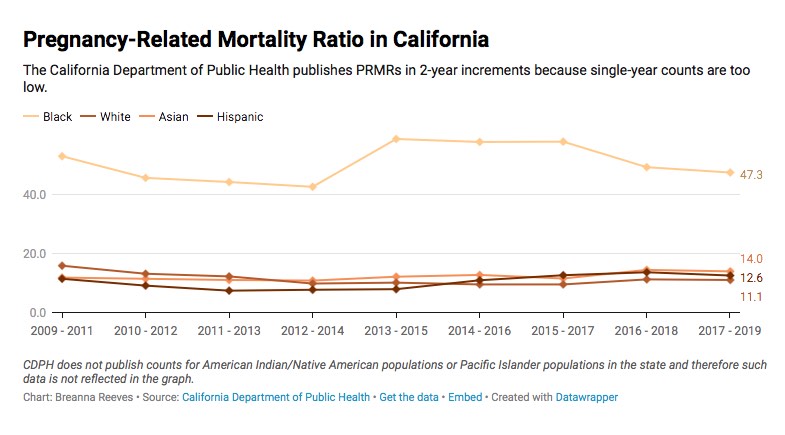 The disproportionate rate at which Black women and birthing people die from pregnancy-related deaths is not new to Black doulas.
The disproportionate rate at which Black women and birthing people die from pregnancy-related deaths is not new to Black doulas.
Chantel Runnels has been a doula for 14 years, something she said she was “called to do.” Family history of fatal maternal health care, a desire to see public health care change and her own pregnancy experience served as catalysts for her becoming a doula. She was introduced to the Sankofa Birthworkers Collective, an Inland Empire-based organization, through a friend who is a midwife.
A midwife is an individual who is medically trained to assist with labor and delivery and provides prenatal, intrapartum and postpartum care, as well as family planning care. The Sankofa Birthworkers Collective consists of a well-rounded group of birthworkers including licensed midwives, postpartum doulas, lactation specialists, maternal mental health experts and midwives-in-training.
“To be around other Black women who may have secondary or tertiary lines of work that affect Black maternal health care or are directly in Black maternal health care was really attractive to me,” Runnels explained. “To be a part of a community of women who live across the [Inland Empire], who come from different demographics, but want to support each other and just wanted to come together was super attractive.”
Married for nearly 15 years and a mother of four, Runnels provides services to a diverse clientele, some who pay out of pocket for private services, others who receive free services through community-based programs like Sankofa or through insurance programs like the Doula Access Program.
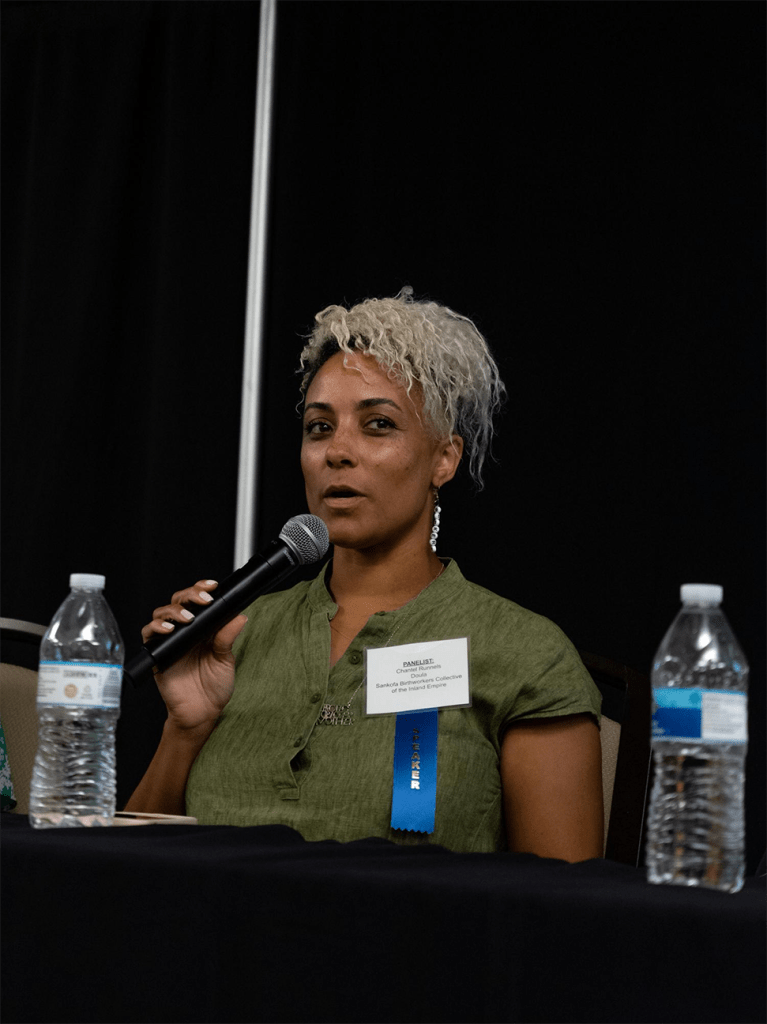
Chantel Runnels explains her role as a doula during a panel at the Inland Empire Perinatal Equity Provider and Community Summit at Cal Baptist University in Riverside, CA on September 16, 2022 (Aryana Noroozi for Black Voice News/CatchLight Local).
Runnels explained that as the need for doulas grows, doula training is that much more important to help ensure that they are trained to meet the needs of the community and have the availability to serve clients.
“This is why compensation for doulas is important, too, because the wages that doulas are paid can’t really compensate for the availability that’s required for the job,” Runnels explained.
As the state began to recognize the invaluable services provided by doulas, legislation to implement doula services throughout the state was introduced prior to the start of the pandemic.
Elevating, expanding, standardizing and compensating doulas in CA
In February 2020, Majority Leader of the California State Assembly Eloise Gómez Reyes (D-Colton) introduced Assembly Bill 2258 which aimed to lower maternal and infant maternal mortality rates in California by launching a three-year Medi-Cal pilot program to provide doula services in 14 counties with the highest birth disparities. The bill fell through when the COVID-19 pandemic shifted priorities in March 2020.
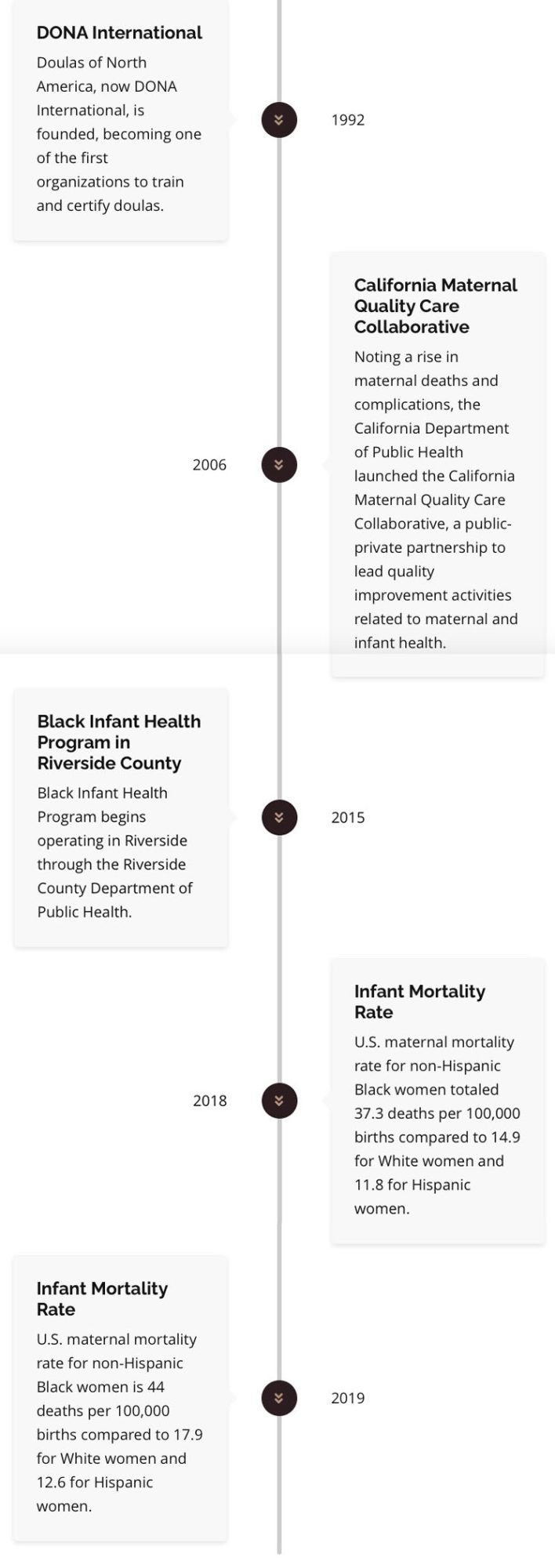 The momentum to introduce legislation that addressed maternal mortality picked up again when Governor Gavin Newsom budgeted funding for a Medi-Cal benefit, which will allow doulas to be reimbursed for full spectrum care rendered to Medi-Cal enrollees. In order to add these services as a benefit, the Department of Health Care Services (DHCS) is required to submit a State Plan Amendment (SPA) to the Centers for Medicare and Medicaid Services (CMS) and receive federal approval — essentially an agreement between the state and federal government on how their Medicaid program will operate and assures the state will abide by federal rules.
The momentum to introduce legislation that addressed maternal mortality picked up again when Governor Gavin Newsom budgeted funding for a Medi-Cal benefit, which will allow doulas to be reimbursed for full spectrum care rendered to Medi-Cal enrollees. In order to add these services as a benefit, the Department of Health Care Services (DHCS) is required to submit a State Plan Amendment (SPA) to the Centers for Medicare and Medicaid Services (CMS) and receive federal approval — essentially an agreement between the state and federal government on how their Medicaid program will operate and assures the state will abide by federal rules.
Over the last year, DHCS has worked with stakeholders from across California including birthworkers, doulas and community organizations to develop a comprehensive SPA that specifies what doula coverage will look like under Medi-Cal, including the scope of services. Following the first draft of the SPA, a coalition of stakeholders made recommendations for an updated version of the SPA that requested the need for specific language to define doula care and services.
The letter recommended revising the definition of a doula to specify the types of services and support they offer. Part of the letter recommended that the SPA add: “The doula care provided will offer any and all aspects of full-spectrum doula care, including prenatal and postpartum or post-pregnancy doula care, continuous presence during labor and delivery, and doula support during miscarriage, stillbirth and abortion. Doula care includes physical, emotional and other nonmedical care.”
Alexis Robles-Fradet is a Health Policy Analyst at National Health Law Program (NHeLP) in Los Angeles, CA, and drafted the coalition letter in April. Alongside Amy Chen, a senior attorney at NHeLP and member of the stakeholder group, Robles-Fradet has published several reports about the components of successful doula programs and pilot doula programs in other counties as part of the Doula Medicaid Project, launched in 2018.
One of the biggest challenges with finalizing the SPA has been the reimbursement rate offered. The initial proposed rate was one of the lowest rates in the country. Upon receiving the first draft of the SPA from DHCS, the coalition noted in the letter: “We do not believe this benefit will be successful if the reimbursement rate is $450.”
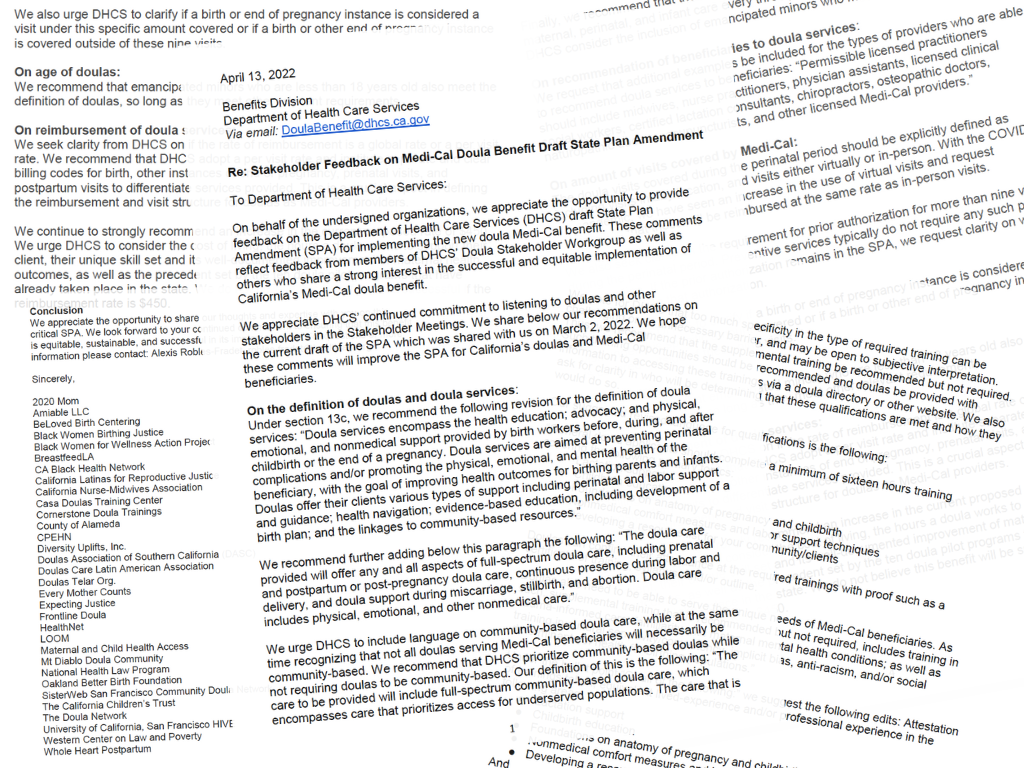
After receiving and reviewing a draft of the State Amendment Plan, a coalition of stakeholders and advocates drafted a letter in response, outlining changes to the plan such as defining a doula’s role and recommending an increase to the offered reimbursement rate of $450. (Graphic by Breanna Reeves).
With the high cost of living in California and the amount of time doulas spend with their clients, Robles-Fradet explained that $450 is not a living wage and would be a barrier to getting the necessary workforce to cover Medi-Cal patients. Medi-Cal covered more than half of all births in California in 2019.
“Doulas deserve to be paid a fair wage. I know we talk about [a] living wage, but I think we should shift into thriving wages, like they’re doing great work and they’ve been doing this great work for so long,” Robles-Fradet stated. “They know how to support their communities.”
Robles-Fradet explained that listening to the doulas and making sure that the benefit will be equitable for them are important factors that will contribute to the success of the Medi-Cal benefit.
As a member of the stakeholder group, Runnels said that the group has worked “tirelessly” to demonstrate that the situation is nuanced. One of the first tasks for DHCS and the stakeholder group was to define doula services and qualifications since it isn’t defined in state law.
“The doula stakeholders did emphasize to us that the length of service in terms of time that they were spending with individuals needed to be considered since doula services typically last significantly longer than other visits with a licensed practitioner,” said René Mollow, Deputy Director of Health Care Benefits & Eligibility.
Mollow explained that doula services as a benefit will be offered through both the Medicare fee-for-service delivery system and Managed Care delivery systems, so doulas will need to be enrolled as Medi-Cal providers and will have contracts with Managed Care plans.
“The majority of covered populations in our program here in California are served through Medi-Cal managed care plans,” Mollow added. “So, that’s where we would expect to see the bulk of the services being provided.”
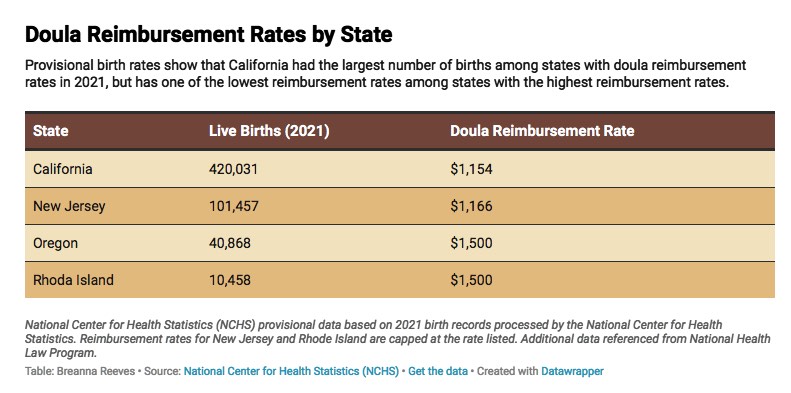
Following several stakeholder meetings, feedback from birthworkers and Governor Gavin Newsom’s revised 2022-23 budget, California’s current proposed reimbursement rate has increased to $1,154 with one initial visit paid at $126.31, eight perinatal visits paid at $60.48 per visit and one labor and delivery visit paid at $544.28.
“California is such a large state. We have so many births a year. The cost of living for doulas and families in San Francisco varies greatly to doulas and families that are serving Barstow,” Runnels clarified. “And so, helping them understand that the original rate…was embarrassing. Even other states do better than that. And the rate that they’ve come to now is still embarrassing.”
There are more than 400,000 births each year in California which is roughly one-eighth of all U.S. births, nearly half of which are paid for by Medi-Cal, according to the California Health Care Foundation. Comparatively, in 2020, there were 39,817 births in Oregon. In June 2022, Oregon updated its SPA to increase the doula reimbursement rate to $1,500.
“I am so grateful for the work that the State Plan Amendment workgroup is doing to really work on this,” Runnels stated. “[But] also, it still does not reflect how critical the role of a doula is in addressing maternal health care in the state of California, particularly for those most vulnerable, which are Black women.”
Stakeholder meetings are ongoing as the group continues to discuss the SPA and work on developing a Provider Manual. DHCS plans to publish a public notice and formally submit the SPA in September.
This article is the second in a series produced as a project for the USC Annenberg Center for Health Journalism’s 2022 California Fellowship.
The post Doulas: A Formal Part of CA Health Care System – Birthing While Black Part 2 appeared first on Black Voice News.
____________________________________________________________
Photo Captions:
Chantel Runnels explains her role as a doula during a panel at the Inland Empire Perinatal Equity Provider and Community Summit at Cal Baptist University in Riverside, CA on September 16, 2022 (Aryana Noroozi for Black Voice News/CatchLight Local).
After receiving and reviewing a draft of the State Amendment Plan, a coalition of stakeholders and advocates drafted a letter in response, outlining changes to the plan such as defining a doula’s role and recommending an increase to the offered reimbursement rate of $450. (Graphic by Breanna Reeves).
Website Tags and Keywords:
Twitter Tags/Handles:
The post Doulas: A Formal Part of CA Health Care System – Birthing While Black Part 2 first appeared on BlackPressUSA.
#NNPA BlackPress
Beloved Actor and Activist Louis Cameron Gossett Jr. Dies at 87
NNPA NEWSWIRE — Louis Gossett Jr., the groundbreaking actor whose career spanned over five decades and who became the first Black actor to win an Academy Award as Best Supporting Actor for his memorable role in “An Officer and a Gentleman,” has died. Gossett, who was born on May 27, 1936, in Brooklyn, N.Y., was 87. Recognized early on for his resilience and nearly unmatched determination, Gossett arrived in Los Angeles in 1967 after a stint on Broadway.
The post Beloved Actor and Activist Louis Cameron Gossett Jr. Dies at 87 first appeared on BlackPressUSA.
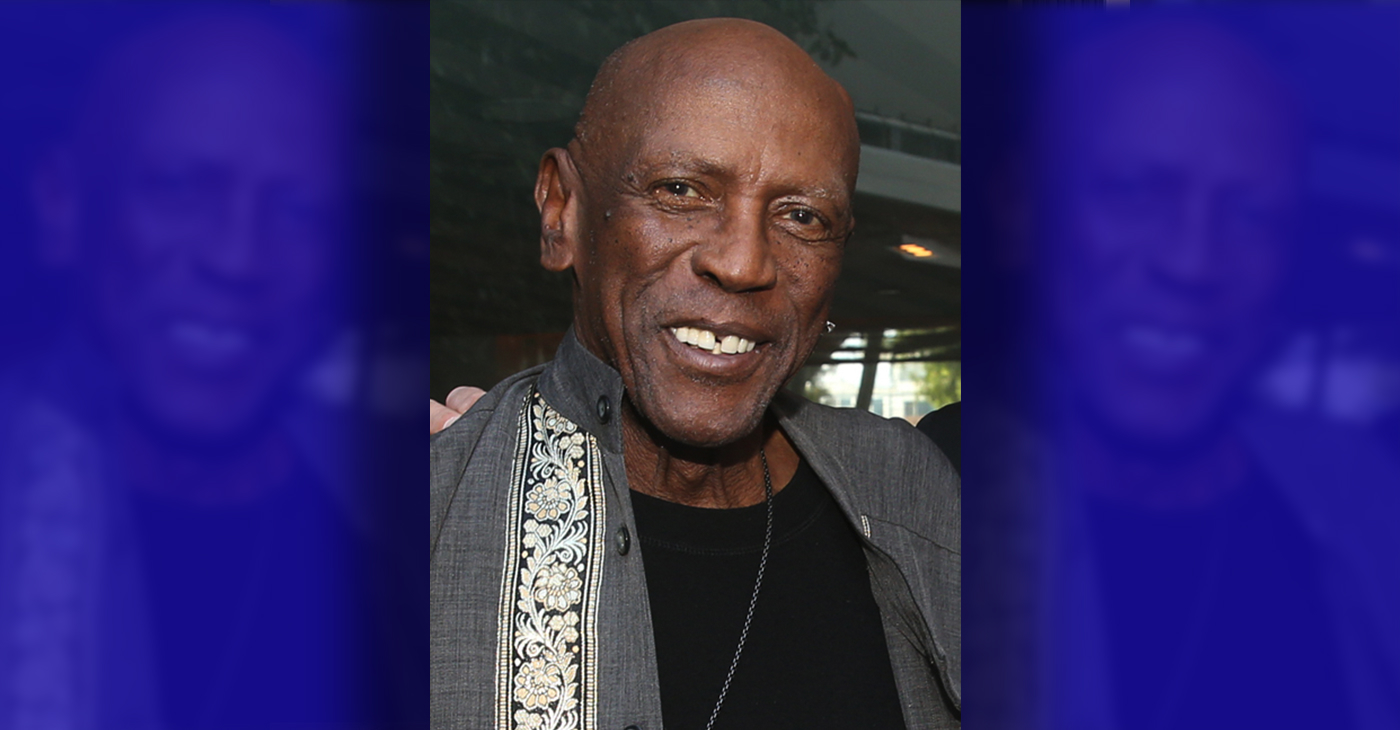
By Stacy M. Brown
NNPA Newswire Senior National Correspondent
@StacyBrownMedia
Louis Gossett Jr., the groundbreaking actor whose career spanned over five decades and who became the first Black actor to win an Academy Award as Best Supporting Actor for his memorable role in “An Officer and a Gentleman,” has died. Gossett, who was born on May 27, 1936, in Brooklyn, N.Y., was 87. Recognized early on for his resilience and nearly unmatched determination, Gossett arrived in Los Angeles in 1967 after a stint on Broadway.
He sometimes spoke of being pulled over by law enforcement en route to Beverly Hills, once being handcuffed to a tree, which he remembered as a jarring introduction to the racial tensions of Hollywood. In his memoir “An Actor and a Gentleman,” Gossett recounted the ordeal, noting the challenges faced by Black artists in the industry. Despite the hurdles, Gossett’s talent shone brightly, earning him acclaim in groundbreaking productions such as “A Raisin in the Sun” alongside Sidney Poitier. His Emmy-winning portrayal of Fiddler in “Roots” solidified his status as a trailblazer, navigating a landscape fraught with racial prejudice.
According to the HistoryMakers, which interviewed him in 2005, Gossett’s journey into the limelight began during his formative years at PS 135 and Mark Twain Junior High School, where he demonstrated early leadership as the student body president. His passion for the arts blossomed when he starred in a “You Can’t Take It With You” production at Abraham Lincoln High School, catching the attention of talent scouts who propelled him onto Broadway’s stage in “Take A Giant Step.” His stellar performance earned him the prestigious Donaldson Award for Best Newcomer to Theatre in 1952. Though initially drawn to sports, Gossett’s towering 6’4” frame and athletic prowess led him to receive a basketball scholarship at New York University. Despite being drafted by the New York Knicks in 1958, Gossett pursued his love for acting, honing his craft at The Actors Studio under the tutelage of luminaries like John Sticks and Peggy Fury.
In 1961, Gossett’s talent caught the eye of Broadway directors, leading to roles in acclaimed productions such as “Raisin in the Sun” and “The Blacks,” alongside legends like James Earl Jones, Cicely Tyson, Roscoe Lee Brown, and Maya Angelou. Transitioning seamlessly to television, Gossett graced small screens with appearances in notable shows like “The Bush Baby” and “Companions in Nightmare.” Gossett’s silver screen breakthrough came with his role in “The Landlord,” paving the way for a prolific filmography that spanned over 50 movies and hundreds of television shows. From “Skin Game” to “Lackawanna Blues,” Gossett captivated audiences with his commanding presence and versatile performances.
However, his portrayal of “Fiddler” in Alex Haley’s groundbreaking miniseries “Roots” earned Gossett critical acclaim, including an Emmy Award. The HistoryMakers noted that his golden touch extended to the big screen, where his role as Sergeant Emil Foley in “An Officer and a Gentleman” earned him an Academy Award for Best Supporting Actor, making him a trailblazer in Hollywood history.
Beyond the glitz and glamour of Hollywood, Gossett was deeply committed to community activism. In 1964, he co-founded a theater group for troubled youth alongside James Earl Jones and Paul Sorvino, setting the stage for his lifelong dedication to mentoring and inspiring the next generation. Gossett’s tireless advocacy for racial equality culminated in the establishment of Eracism, a nonprofit organization dedicated to combating racism both domestically and abroad. Throughout his illustrious career, Gossett remained a beacon of strength and resilience, using his platform to uplift marginalized voices and champion social change. Gossett is survived by his children, Satie and Sharron.
The post Beloved Actor and Activist Louis Cameron Gossett Jr. Dies at 87 first appeared on BlackPressUSA.
#NNPA BlackPress
COMMENTARY: D.C. Crime Bill Fails to Address Root Causes of Violence and Incarceration
WASHINGTON INFORMER — The D.C. crime bill and so many others like it are reminiscent of the ‘94 crime bill, which produced new and harsher criminal sentences, helped deploy thousands of police and surveilling methods in Black and brown communities, and incentivized more states to build prisons through a massive infusion of federal funding. While it is not at the root of mass incarceration, it significantly accelerated it, forcing a generation of Black and brown families into a never-ending cycle of state-sanctioned violence and incarceration.
The post COMMENTARY: D.C. Crime Bill Fails to Address Root Causes of Violence and Incarceration first appeared on BlackPressUSA.
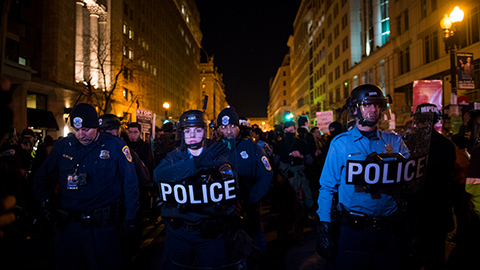
By Kaili Moss and Jillian Burford | Washington Informer
Mayor Bowser has signed the “Secure DC” omnibus bill passed by the D.C. Council last month. But we already know that this bill will be disastrous for all of D.C., especially for Black and brown residents.
While proponents claim that this legislation “will make D.C. residents safer and more secure,” it actually does nothing to address the root of the harm in the first place and instead maintains a cycle of violence, poverty, and broken community ties. The omnibus bill calls for increased surveillance, drug-free zones, and will expand pre-trial detention that will incarcerate people at a significantly higher rate and for an indeterminate amount of time before they are even tried. This bill will roll back decades of nationwide policy reform efforts and initiatives to keep our communities safe and whole, which is completely contradictory to what the “Secure” D.C. bill claims it will do.
What is unfolding in Washington, D.C., is part of a dangerous national trend. We have seen a resurrection of bad crime bills in several jurisdictions across the country — a phenomenon policy experts have named “zombie laws,” which are ineffective, costly, dangerous for communities of color and, most importantly, will not create public safety. Throwing more money into policing while failing to fund preventative measures does not keep us safe.
The D.C. crime bill and so many others like it are reminiscent of the ‘94 crime bill, which produced new and harsher criminal sentences, helped deploy thousands of police and surveilling methods in Black and brown communities, and incentivized more states to build prisons through a massive infusion of federal funding. While it is not at the root of mass incarceration, it significantly accelerated it, forcing a generation of Black and brown families into a never-ending cycle of state-sanctioned violence and incarceration. Thirty years later, despite spending billions each year to enforce these policies with many of these provisions remaining in effect, it has done very little to create long-term preventative solutions. Instead, it placed a permanent moving target on the backs of Black people, and the D.C. crime bill will do the same.
The bill calls for more pretrial detention. When our loved ones are held on pretrial detention, they are held on the presumption of guilt for an indeterminate amount of time before ever seeing a judge, which can destabilize people and their families. According to experts at the Malcolm Weimer Center for Social Policy at Harvard University, just one day in jail can have “devastating consequences.” On any given day, approximately 750,000 people are held in jails across the nation — a number that beats our nation’s capital population by about 100,000. Once detained, people run the risk of losing wages, jobs, housing, mental and health treatments, and time with their families. Studies show that pretrial detention of even a couple of days makes it more likely for that person to be rearrested.
The bill also endangers people by continuing a misguided and dangerous War on Drugs, which will not get drugs off the street, nor will it deter drug use and subsequent substance use disorders (SUDs). Drug policies are a matter of public health and should be treated as such. Many states such as Alabama, Iowa and Wisconsin are treating the current fentanyl crisis as “Crack 2.0,” reintroducing a litany of failed policies that have sent millions to jails and prisons instead of prioritizing harm reduction. Instead, we propose a simple solution: listen to members of the affected communities. Through the Decrim Poverty D.C. Coalition, community members, policy experts and other stakeholders formed a campaign to decriminalize drugs and propose comprehensive legislation to do so.
While there are many concerning provisions within the omnibus bill, car chases pose a direct physical threat to our community members. In July 2023, NBC4 reported that the D.C. Council approved emergency legislation that gave MPD officers the ability to engage in vehicular pursuits with so-called “limited circumstances.” Sgt. Val Barnes, the head of MPD’s carjacking task force, even expressed concern months before the decision, saying, “The department has a pretty strict no-chase policy, and obviously for an urban setting and a major metropolitan city, that’s understandable.” If our law enforcement officers themselves are operating with more concern than our elected officials, what does it say about the omnibus bill’s purported intention to keep us safe?
And what does it mean when the risk of bodily harm is posed by the pursuit itself? On Saturday, Feb. 10, an Eckington resident had a near-miss as a stolen car barreled towards her and her dog on the sidewalk with an MPD officer in pursuit. What responsibility does the city hold if this bystander was hit? What does restitution look like? Why are our elected officials pushing for MPD officers to contradict their own policies?
Just a few summers ago during the uprisings of 2020, we saw a shift in public perspectives on policing and led to legislation aimed at limiting police power after the highly-publicized murders of loved ones Breonna Taylor and George Floyd — both victims of War on Drugs policing and the powers gained from the ’94 crime bill. And yet here we are. These measures do not keep us safe and further endanger the health of our communities. Studies show that communities that focus on harm reduction and improving material conditions have a greater impact on public safety and community health. What’s missing in mainstream conversations about violent crime is the violence that stems from state institutions and structures that perpetuate racial and class inequality. The people of D.C. deserve to feel safe, and that includes feeling safe from the harms enacted by the police.
Kaili Moss is a staff attorney at Advancement Project, a national racial justice and legal organization, and Jillian Burford is a policy organizer at Harriet’s Wildest Dreams.
The post COMMENTARY: D.C. Crime Bill Fails to Address Root Causes of Violence and Incarceration first appeared on BlackPressUSA.
#NNPA BlackPress
Mayor, City Council President React to May 31 Closing of Birmingham-Southern College
THE BIRMINGHAM TIMES — “This is a tragic day for the college, our students, our employees, and our alumni, and an outcome so many have worked tirelessly to prevent,” Rev. Keith Thompson, chairman of the BSC Board of Trustees said in an announcement to alumni. “We understand the devastating impact this has on each of you, and we will now direct our efforts toward ensuring the smoothest possible transition for everyone involved.”
The post Mayor, City Council President React to May 31 Closing of Birmingham-Southern College first appeared on BlackPressUSA.

By Barnett Wright | The Birmingham Times
Birmingham-Southern College will close on May 31, after more than a century as one of the city’s most respected institutions.
“This is a tragic day for the college, our students, our employees, and our alumni, and an outcome so many have worked tirelessly to prevent,” Rev. Keith Thompson, chairman of the BSC Board of Trustees said in an announcement to alumni. “We understand the devastating impact this has on each of you, and we will now direct our efforts toward ensuring the smoothest possible transition for everyone involved.”
There are approximately 700 students enrolled at BSC this semester.
“Word of the decision to close Birmingham Southern College is disappointing and heartbreaking to all of us who recognize it as a stalwart of our community,” Birmingham Mayor Randall Woodfin said in a statement. “I’ve stood alongside members of our City Council to protect this institution and its proud legacy of shaping leaders. It’s frustrating that those values were not shared by lawmakers in Montgomery.”
Birmingham City Council President Darrell O’Quinn said news of the closing was “devastating” on multiple levels.
“This is devastating for the students, faculty members, families and everyone affiliated with this historic institution of higher learning,” he said. “It’s also profoundly distressing for the surrounding community, who will now be living in close proximity to an empty college campus. As we’ve seen with other institutions that have shuttered their doors, we will be entering a difficult chapter following this unfortunate development … We’re approaching this with resilience and a sense of hope that something positive can eventually come from this troubling chapter.”
The school first started as the merger of Southern University and Birmingham College in 1918.
The announcement comes over a year after BSC officials admitted the institution was $38 million in debt. Looking to the Alabama Legislature for help, BSC did not receive any assistance.
This past legislative session, Sen. Jabo Waggoner sponsored a bill to extend a loan to BSC. However, the bill subsequently died on the floor.
Notable BSC alumni include former New York Times editor-in-chief Howell Raines, former U.S. Sen. Howell Heflin and former Alabama Supreme Court Chief Justice Perry O. Hooper Sr.
This story will be updated.
The post Mayor, City Council President React to May 31 Closing of Birmingham-Southern College first appeared on BlackPressUSA.
-

 Activism4 weeks ago
Activism4 weeks agoOakland Post: Week of March 27 – April 2, 2024
-

 #NNPA BlackPress4 weeks ago
#NNPA BlackPress4 weeks agoFrom Raids to Revelations: The Dark Turn in Sean ‘Diddy’ Combs’ Saga
-

 #NNPA BlackPress4 weeks ago
#NNPA BlackPress4 weeks agoCOMMENTARY: D.C. Crime Bill Fails to Address Root Causes of Violence and Incarceration
-

 #NNPA BlackPress4 weeks ago
#NNPA BlackPress4 weeks agoCOMMENTARY: Lady Day and The Lights!
-

 #NNPA BlackPress4 weeks ago
#NNPA BlackPress4 weeks agoMayor, City Council President React to May 31 Closing of Birmingham-Southern College
-

 #NNPA BlackPress4 weeks ago
#NNPA BlackPress4 weeks agoBaltimore Key Bridge Catastrophe: A City’s Heartbreak and a Nation’s Alarm
-

 #NNPA BlackPress4 weeks ago
#NNPA BlackPress4 weeks agoBaltimore’s Key Bridge Struck by Ship, Collapses into Water
-

 #NNPA BlackPress4 weeks ago
#NNPA BlackPress4 weeks agoBeloved Actor and Activist Louis Cameron Gossett Jr. Dies at 87



